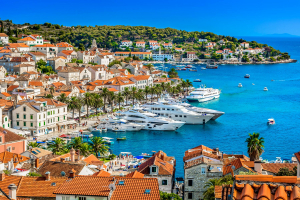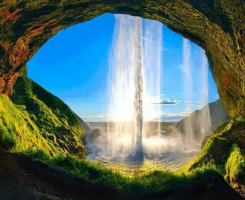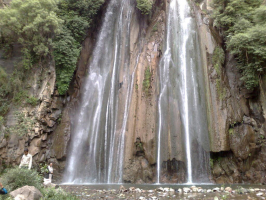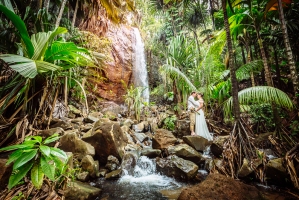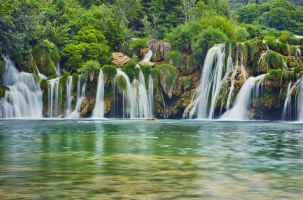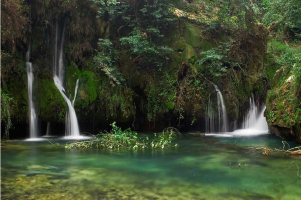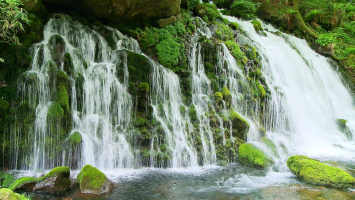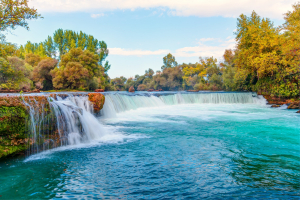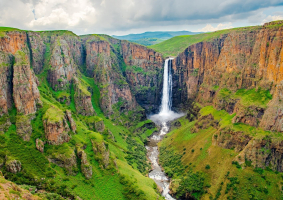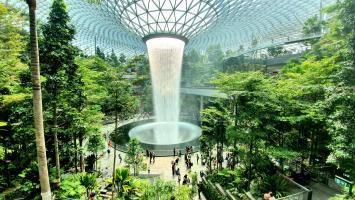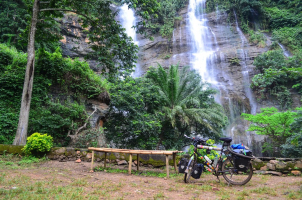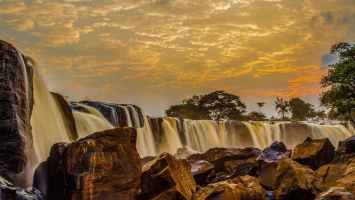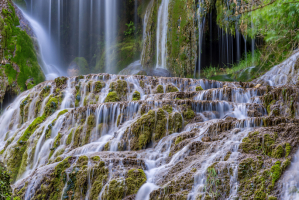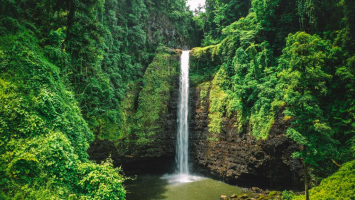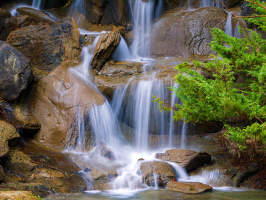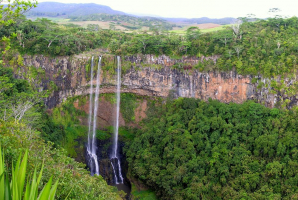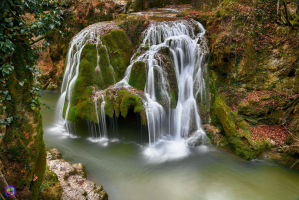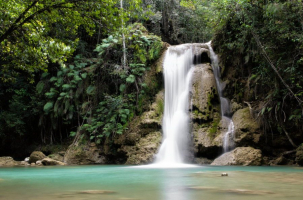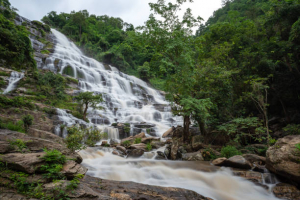Top 15 Most Beautiful Waterfalls in Croatia
From single high drops to multitiered cascades, Croatia is home to some of the most stunning and breathtaking waterfalls ever made. The falls are situated in ... read more...beautiful river valleys that are surrounded by karst mountains and Mediterranean woods, creating an epic landscape unlike any other. And here are the most beautiful waterfalls in Croatia.
-
The tallest waterfall in Croatia is The Great Waterfall. It is a must-see location on your journey to Croatia because it is situated in the Plitvice Lakes National Park, a UNESCO World Heritage Site. There are 16 lakes in the National Park, which is about 8 km2. The Plitvice stream thundered over a 78-meter-high cliff to create the Great Waterfall. It produces the Sastavci Falls, which after 150 meters descend the travertine barrier and form the river Korana, along with the water from the Lower Lakes.
The Great Waterfall, also known as Veliki slap in Croatian, is regarded as the most stunning waterfall in the Plitvice region. Visitors are amazed by its shifting colors. The amount of sunshine and the minerals in the water both influence the hue. The water will have a green, gray, and blue appearance during the day. The Great Waterfall was produced by the Plitvice stream, which originates 3 km west at the base of the mountain Preke Kosa, unlike other Plitvice waterfalls, which were constructed by the rush of water between lakes over travertine barriers. The water levels at Plitvice Lakes are highest in the spring and fall. The subsurface wave blasts the water out after a few days of rain. The stream is forced to flow more forcefully down the waterfalls as a result. If you go in the winter, you might find that the waterfall is almost all frozen, creating an enormously magnificent ice sculpture.
Location: Plitvica Selo
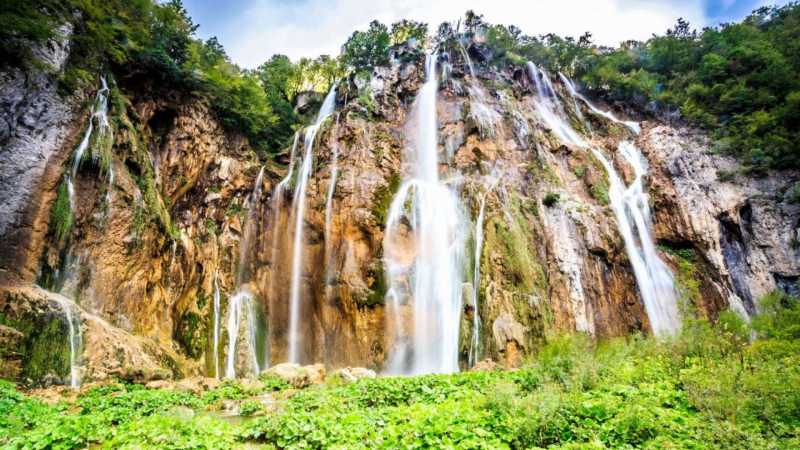
Photo: Tourist.hr 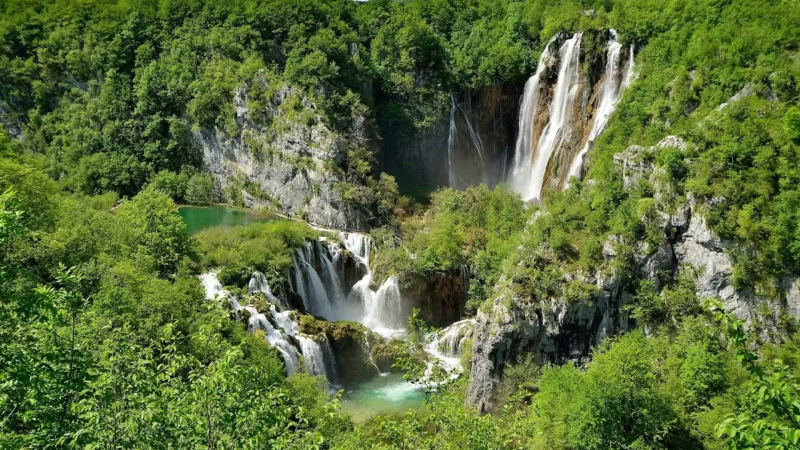
Photo: Nacionalni park Plitvička jezera -
Sastavci Falls, which is also on the Korana River, is a nearly 80-foot-high waterfall situated in the lower lakes region of Plitvice Lakes National Park in between the rivers' "Y." It is also considered as one of the most beautiful waterfalls in Croatia. It looks like the entire area is made up of waterfalls because other neighboring falls are clearly seen. You'll probably never get tired of the fresh, distinctive waterfalls that appear to be waiting to be found around every bend, despite some people's claims that there might be too much of a good thing. Water from the magnificent outcroppings of dark brown rocks that make up the Sastavci's several tiers flows over them and into the crystal-clear pool below. There are many trails that lead to numerous viewing locations, just like many of the park's falls.
One of the park's most exquisite waterfalls, Sastavci Slap is set in a truly breathtaking environment. With a 78-meter Veliki Slap in the distance, the river Korana plunges over 25 meters. Sastavci Slap is best viewed from the vantage point at Entrance I. You have a good view of the Sastavci and Veliki slaps from this location. An additional viewpoint is available from the gorge to the north of Veliki Slap.
Location: Plitvica Selo
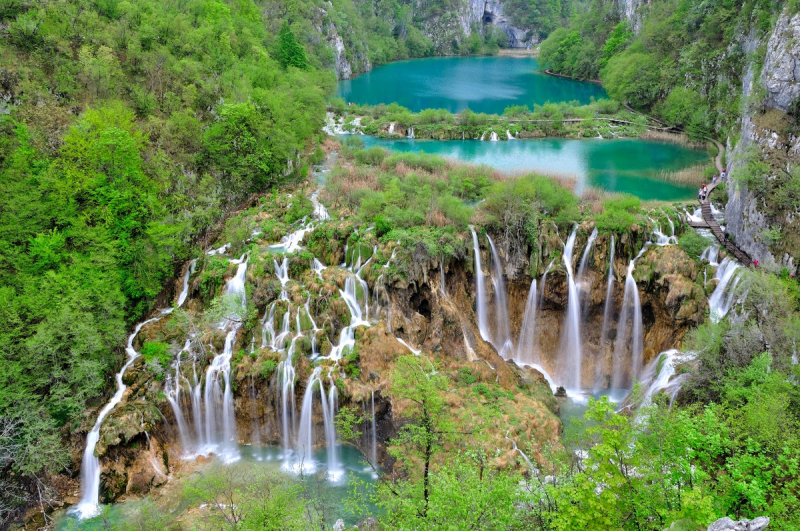
Photo: Google Arts & Culture 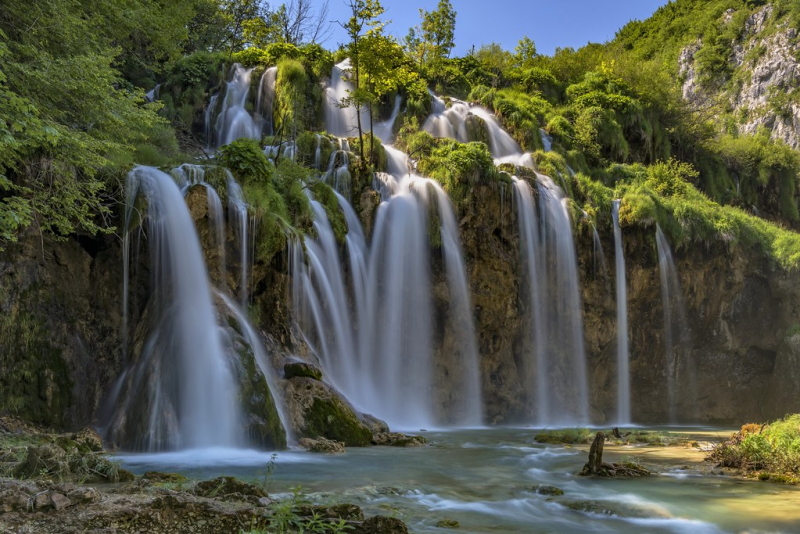
Photo: Flickr -
Roski Waterfall or Roski Slap is another enduring favorite in Krka National Park, just alongside Skradinski Buk. The majority of excursions start in Split, Croatia's second-largest city. You will arrive at the Skradin bus stop after the approximately 90-minute bus ride, and it is a short walk to the park. Even by the standards of Croatian waterfalls, the falls are magnificent because they are made up of 12 linked waterfalls that have a combined height of almost 80 feet. The cost of the ferry ride, which takes 20 minutes, is included in the park entrance fee, and the vistas are equally as breathtaking.
One of the most striking features of the Krka National Park is without a doubt "Roski slap." Although many visitors just stroll along the wooden bridges while admiring the waterfalls, there are other, more beneficial ways to spend your time there. Read about the history of the Roski Slap and what gave it its fame while on the boat, taking in the sun's rays and the sound of the waves. The "Roski slap" is the end of a 150-meter-deep canyon that the water from a lake near Bogocin travels through. The river's 650 meters of length has travertine barriers that give the water droplets the appearance of "silver necklaces" made by combining different types of water.
Location: Bogatić
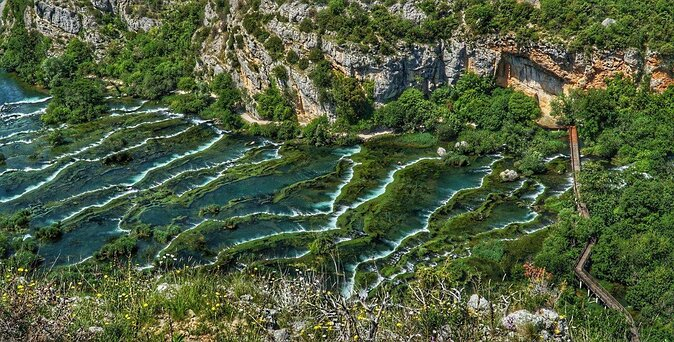
Photo: Viator 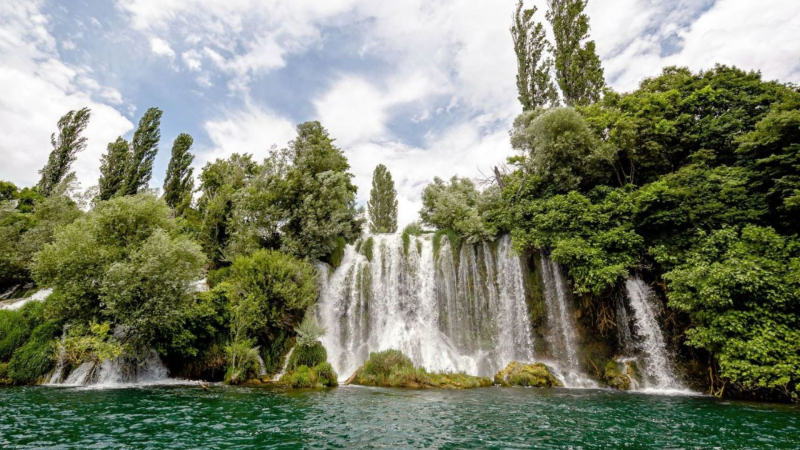
Photo: Tourist.hr -
Pevalekovi Slapovi is the next destination in the list of the most beautiful waterfalls in Croatia. Pevalekovi Falls, which are also in Plitvice Lakes National Park, have a semicircular crest that is about 50 feet high, amazing water flow, and a picture-perfect pool below them. Dr. Ivo Pevalek, whose excellent and numerous scientific articles are research findings on the karst river and lakes, gave the waterfalls their name. The sheer granite sides around the falls are covered in dense forest. A small entrance fee is required, but when you consider the surroundings, it's a steal. Additionally, the bus to the top lake is included in the price of admission. There are trailheads that lead to all of the park's lakes and waterfalls that you may access from the park office and bus drop-off.
The Plitvice Lakes National Park's Pevalekovi Slapovi waterfall is tucked away in a remote area, making it less well-known and challenging to locate if you're just wandering around aimlessly. But those who locate it frequently describe it as a beautiful sight. This charming waterfall cascades water into a crystal-clear pool below from a peak that is approximately 50 feet high and shaped like a half-circle. There are cliff cliffs covered with forests that surround the falls. Pevalekovi Slapovi, like every other waterfall or pool in Plitvice Lakes National Park, is off-limits to swimming.
Location: Plitvica
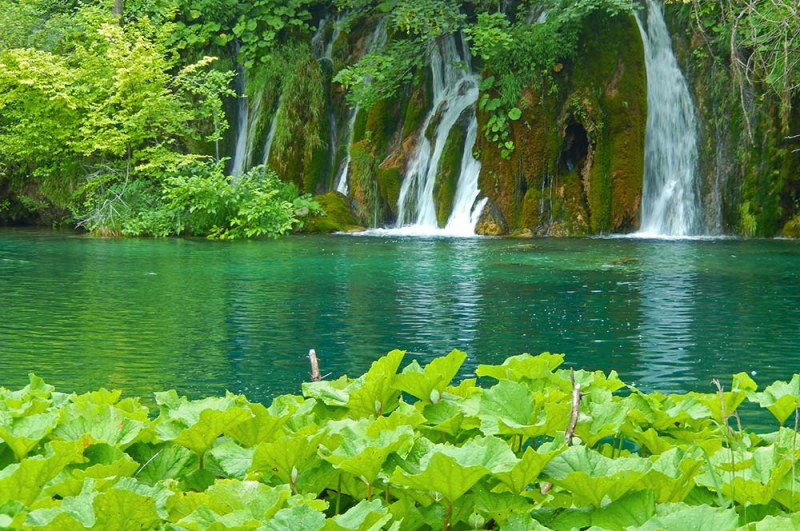
Photo: Journey Gazer 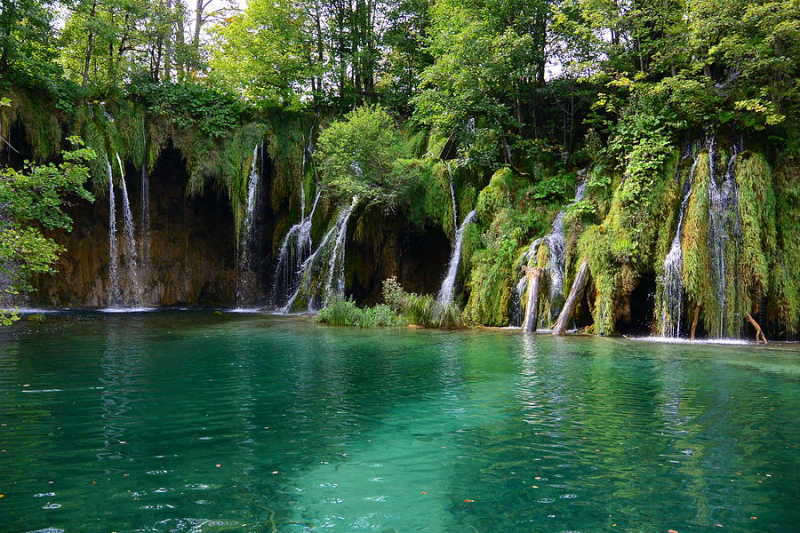
Photo: Fine Art America -
The longest waterfall on the Krka River is Skradinski Buk, located in National Park Krka. It is situated close to Skradin, at the very tip of the Krka River. Many visitors make the annual trip to witness this incredibly gorgeous waterfall, which is made up of lovely travertine barriers, islands, and lakes. In Croatian, the word "buk" refers to noise made by vigorous water movement. Skardinski Buk consists of 17 stairs with a combined length of 800 meters. The difference in height is 45 meters.
The majority of Skradinski Buk's travertine is less than 10,000 years old. The "dead tufa" on the river's ancient channel is 125 thousand years old. One of the most distinctive and stunning landscape views of the National Park was produced as a result of the building of the travertine barrier on Skradinski Buk, which caused the upstream lake flooding of the Krka River to Roski slap. Below Skradinski Buk is where the river Krka's (estuary) mouth starts. The most bustling area of the Krka National Park is often Skradinski Buk, where there are a lot of gift shops and eateries. Visitors may stroll securely and take in the view all year long thanks to a network of trails and bridges. Watermills, which have been powered by water flow for generations, have been restored at Skradinski Buk, as well as other locations in the park. Mills have served as gift shops and exhibit locations for regional ethnographic collections.
Location: Visovačko jezero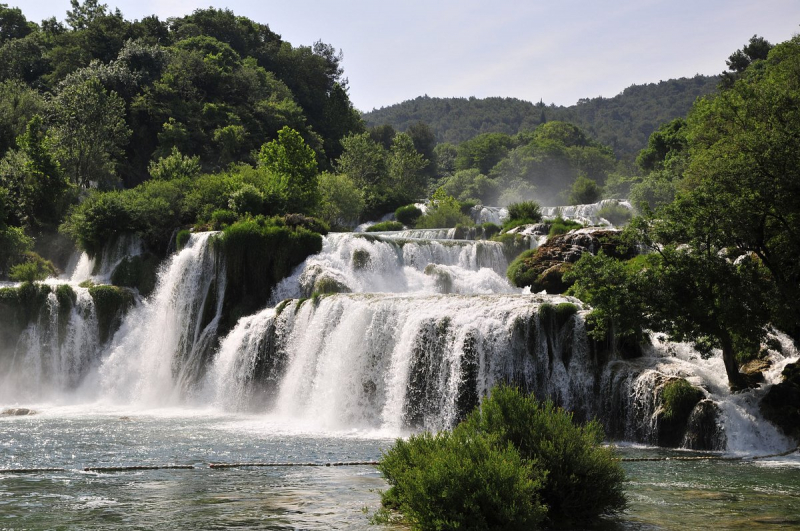
Photo: TripAdvisor 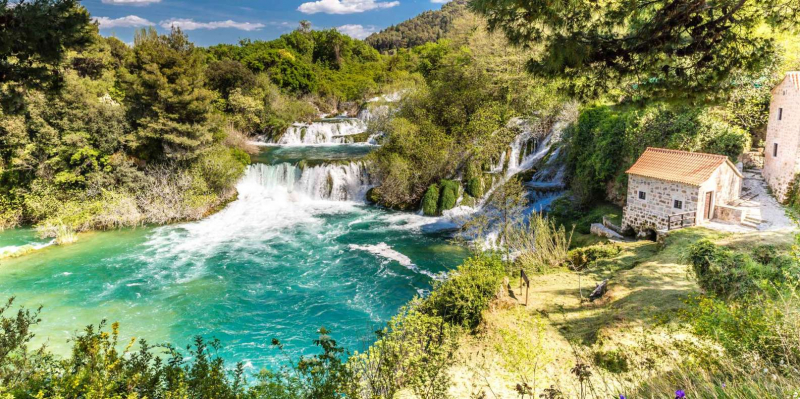
Photo: GetYourGuide -
The charming town of Rastoke is among Croatia's most alluring tourist destinations as well as one of the most beautiful waterfalls in Croatia. Slunjica or Slunica, a little karst river and branch of the Korana river, poured over the travertine rocks to form the 23 waterfalls that make up Rastoke Falls. Rastoke is often referred to as "Small Plitvice" because it is only 30 kilometers from Plitvice Lakes National Park, where the waterfalls' geological makeup is the same.
Rastoke waterfalls have colorful names that conceal intriguing tales. The Rastoke Falls, created by the confluence of the Korana and Slunjcica Rivers, are full of emerald-colored water flowing over the many falls and rapids that combine to create these breathtaking falls. They are an hour's drive north of the Plitvice Lakes National Park's main park region, making them less crowded and more alluring to those who enjoy some space while admiring a magnificent waterfall. The region is a favorite of photographers and painters who want to capture the mystical character of the place. It is also notable for the different water wheels that dot the river. Despite being a small village, there are plenty of hotels and restaurants to choose from because the town and its falls have recently gained popularity.
Location: Central Croatia
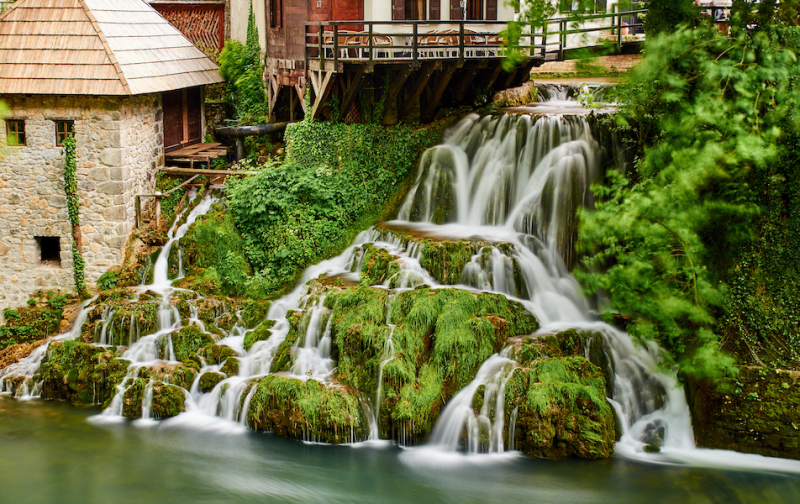
Photo: My Istria 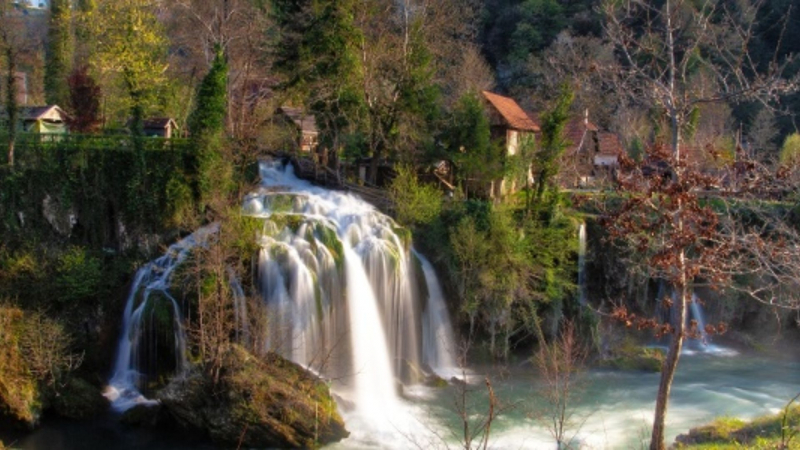
Photo: Outdooractive -
On the banks of the river Mirna, which cascaded created beautiful cauldron-shaped hollows in the limestone and flysch rocks, is the abandoned settlement of Kotli. The nearby Kotli waterfall, which is named after it, is 12 meters high and 7 meters broad. The Seven Waterfalls Trail includes the Kotli waterfall. The Mirna River's course is followed by this route. The trail begins in the high hamlet of Buzet, which offers beautiful views of the Mirna River Valley. The hike features seven waterfalls that rise up to 26.5 meters in height.
With more than a hundred residents, Kotli village was formerly well-known for its tailors and millers. After World War II, people started moving away in search of a better life in cities. Its final residents departed in the 1970s. There are still stone homes and historic mills there now. Despite this, the village has grown to be a favorite stop for outdoor enthusiasts visiting the Kotli waterfall, therefore it is rarely empty. Numerous tourists compare Kotli to the well-known Turkish destination Pamukkale as a result of these very pleasing pools. The natural jacuzzis are perfect for unwinding in, and the shallow blue pools were formed by sedimentation and overflowing mineral water.
Location: Punjab
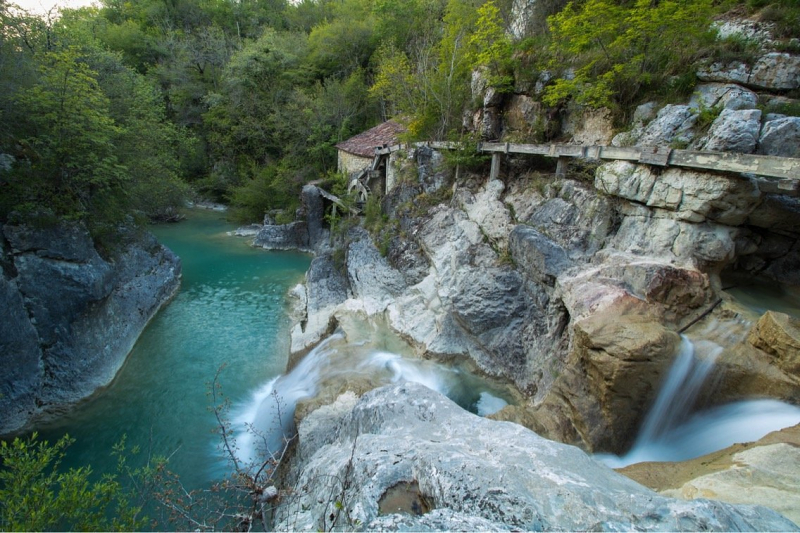
Photo: TripAdvisor 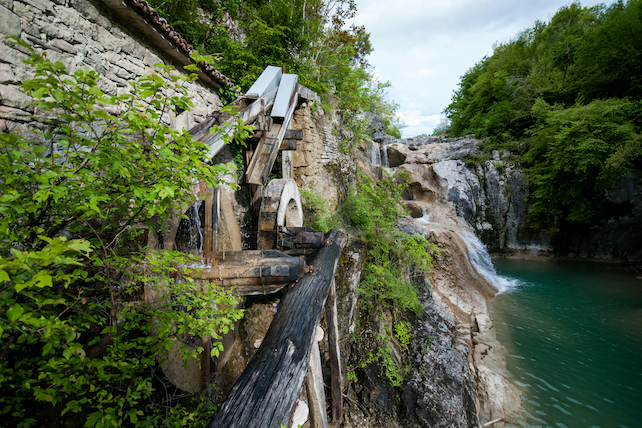
Photo: My Istria -
Strbački Buk is a waterfall on the river Una that is 25 meters (82 feet) high and is close to the town of Martin Brod, which is close to the Croatian and Bosnian borders. Strbački Buk is made up of a number of nearby waterfalls. Travertine formations are produced when a river cascades and falls in a sequence. The Una National Park includes it.On hot summer days, the noise and splashing drops from the waterfalls provide a welcome source of relief from the heat. Rafting is an additional alternative for thrill-seekers. Rafting on the Una, or Strbački Buk, is more fun and demanding than on other rivers.
The falls are wide and distinguished by mossy, green granite outcroppings sticking through the tumbling waves in addition to their stunning height. There are many viewing points, as well as some seats that provide lovely spots for a picnic lunch or just to sit and take it all in. If you have the time, you should visit the well-known Orthodox Church in the town of Donji Lapac. The waterfalls, which are named after the nearby Croatian town of Donji Strbci, are easiest to get from the Bosnian side, where a macadam road turns at Orasac and is about 7 km long. That's all about the eighth the most beautiful waterfalls in Croatia we want to mention.
Location: Orašac
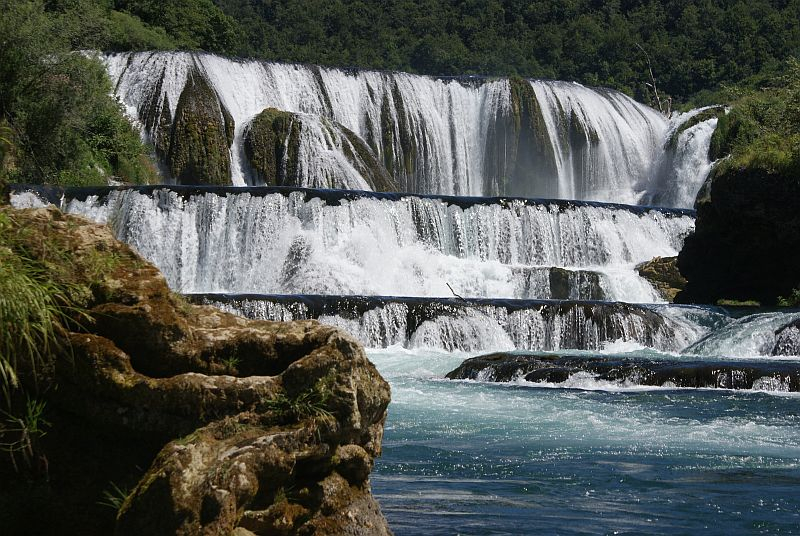
Photo: Outdooractive 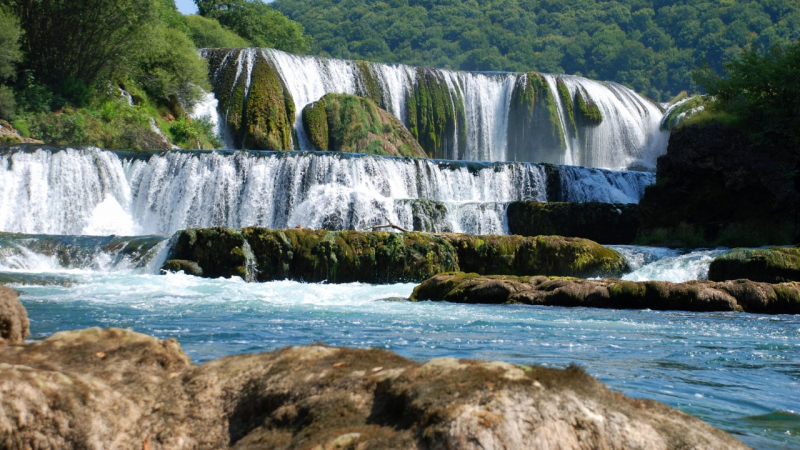
Photo: Rezgo -
Zarečki Krov, a waterfall on the Pazinica stream, is one of the tallest waterfalls in the Istria region. As the name implies, Zarecki Roof is a large cave that resembles a roof, over which the river Pazinica forges a waterfall that is ten meters high and plunges into a lake that is ten meters deep. It is the most intriguing natural feature of the Pazinica watercourse, together with Pazin Cave. It lies 3 km away from Pazin in the direction of Cerovlje. Every waterfall on the Pazinica River has a cave beneath it. For instance, the Pazinski Krov waterfall and a cave can be seen downstream from the Zarečki Krov.
There are also a ton of routes for sport climbing of different levels of difficulty. One is Croatia's most challenging climbing route, the Snake, which involves scaling the cave ceiling. The waterfall provides the ideal cliff jumping location. The drop is around ten meters, and there is adequate depth in the sea below for a safe leap. The Zarečki Krov waterfall is free to enter, in contrast to the majority of Croatia's attractions. As a result, swimming, diving, walking, fishing, water polo, and picnics are all common activities at Zarečki Krov.
Location: Istria
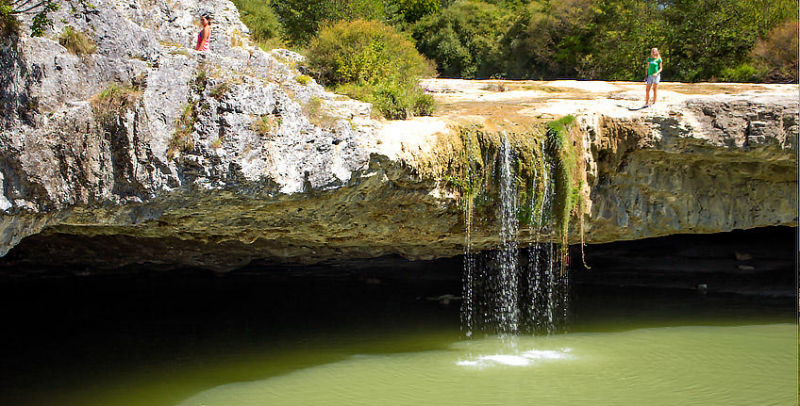
Photo: Bale - Valle 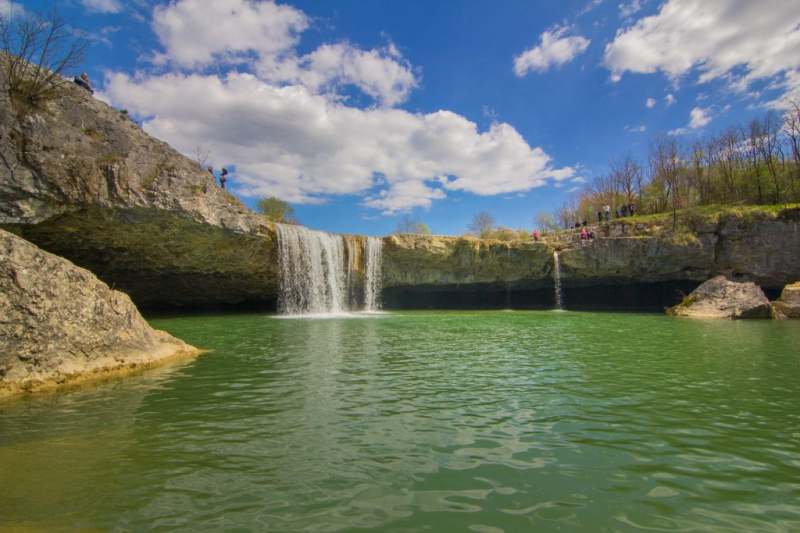
Photo: Istriago.net -
Istria's Gologorica is located 5 kilometers to the southeast of Cerovlje. This one of the most beautiful waterfalls in Croatia is located lower in the valley and is accessible via a winding, steep road that provides lovely views of the surroundings and Istrian highlands. The Raa river basin includes the waterfall, which is about 3 meters high. It descends over ivy that is growing on the rocks and into an emerald pond. A cave ceiling over a pond, a typical karst Istrian feature, is present. Expect to observe falls without a significant drop or width. It's a quiet small fall located in the most stunning rural setting, giving you the impression that time has been transported back a few centuries.
A wooden door leads to the waterfall so that household animals can't get out. However, you are allowed to go in and take in the sounds of the waterfall and the nearby wildlife. Near the pond, there are couches and tables for lounging while admiring this tiny piece of nature's beauty. In no time, domestic Istrian animals like donkeys, ducks, and geese will be all around you. It is best for kids to enjoy it here, thus it is not strange that schools and kindergarten frequently visit this waterfall. The waterfall may dry out in the summer, so the ideal time to visit is just after a wet day when the amount of water is at its highest.
Location: Cerovlje
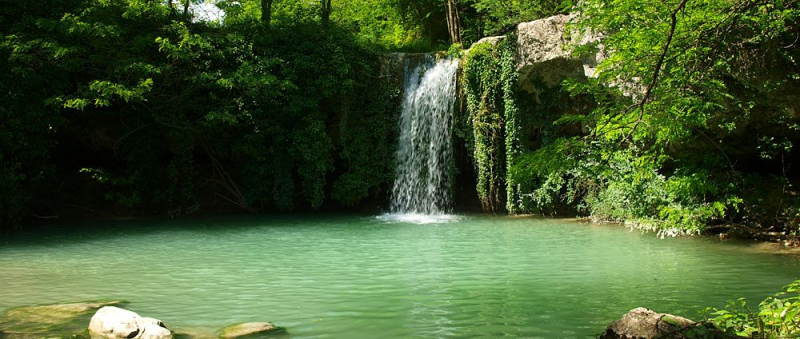
Photo: Pinterest 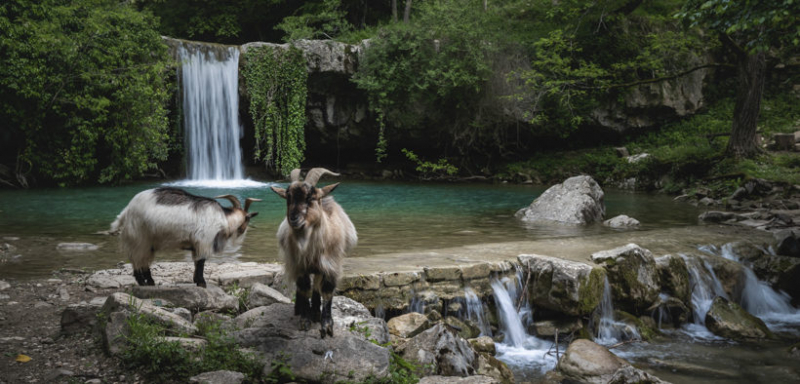
Photo: lust-auf-Kroatien.de -
It rises from the Jugovski stream or Aril, falls into lakes, and finally vanishes into a sinkhole, giving the area around it a fairytale feel. The Butorni Ponor waterfall is about 10 m high. Depending on which direction you are coming from, you can access it via Oprtalj or the Buje region's Maruii location on the Buje-Terna route. In Croatian Istria, there is an intriguing but little-known karst feature that consists of the waterfall and the bottomless sinkhole. It was found that the sinkhole is 500 meters long and 230 meters deep. The sinkhole's opening can be seen when there isn't any water present.
It is simple to descend the waterfall because it is enclosed by fencing, as is the trail leading to its base. Unfortunately, there is a deep lake at the base of the waterfall, so you cannot go around it, but you can pass underneath it. There is an abandoned mill a short distance upstream from the waterfall, ten meters from Jugovski Potok's left side. An idyllic setting for meditation is created by the presence of water, the forest, an old mill, and moss. During the Meeting of Forest Poets in Butori in August, local artists commemorate this reality with bonfires, lanterns, and torches. Due to Istria's dry summers, the waterfalls may also totally stop flowing. In order to avoid traveling in vain, be careful to know when it last rained.
Location: Buje
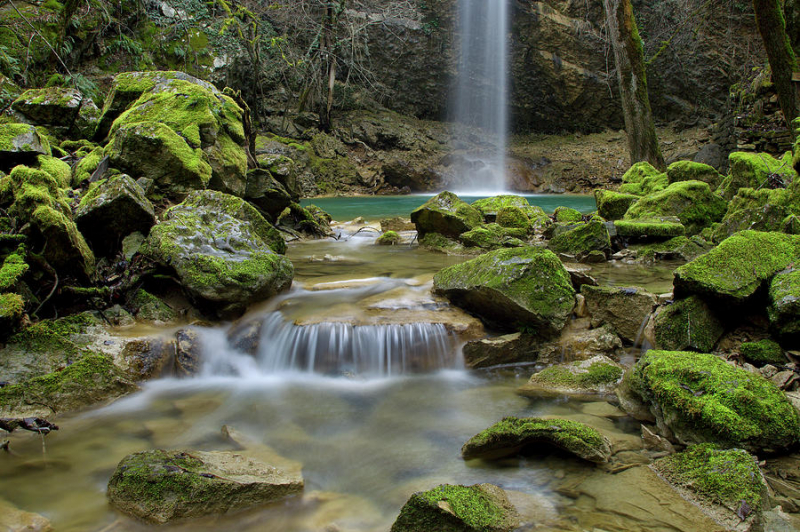
Photo: Fine Art America 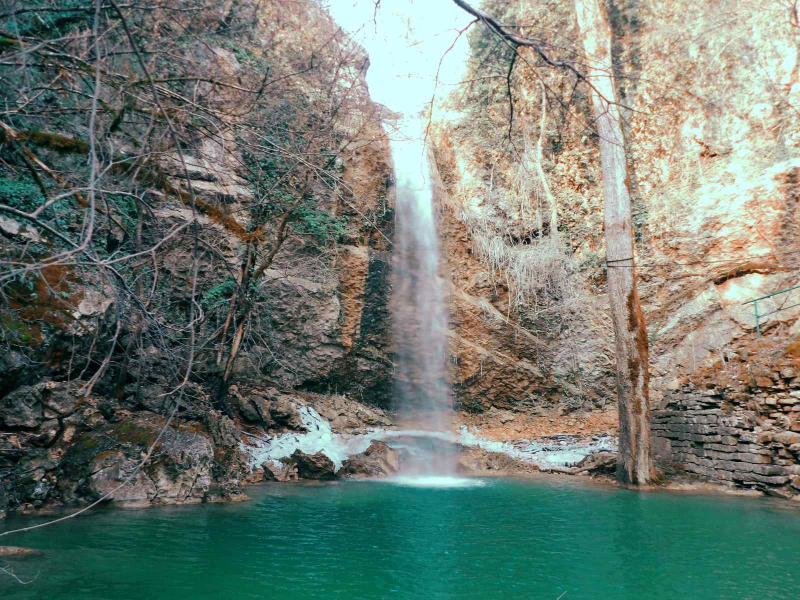
Photo: Istriago.net -
Another waterfall in Istria close to Buzet is called Sopot (but is more frequently referred to as Copot), and it is a worthwhile trip. It is situated close to Podbreg along the Reica River. It is unique since it is so high (30 m, the second highest Istrian waterfall after the Vela Draga Rain Waterfall). Water has carved a hole in the rock, through which the water at the peak of the waterfall flows. The lesser-known, more well-known waterfall at the base of Pian shares a name with this one (24.5 m). You'll frequently hear Buzet's Sopot referred to as Copot.
Marine fossils discovered in the neighboring soil and rock are thought to be proof that this location was once submerged under the sea. The falls are flanked by lovely woodlands and a stunning and rolling landscape. They were carved into the surrounding limestone over millions of years. There is a climbing area beside the waterfall. Because of its outstanding beauty and likeness to the setting of the film Avatar, the area is known among climbers as Pandora. A road branch next to "irite" provides access to the village by road. After passing through Brgad, you arrive in Strana after taking a brief macadam route. After roughly 200 meters of descending the asphalt road, a signpost for the climbing area can be seen. The waterfall is a 10-minute walk from here down the walkway.
Location: Istria
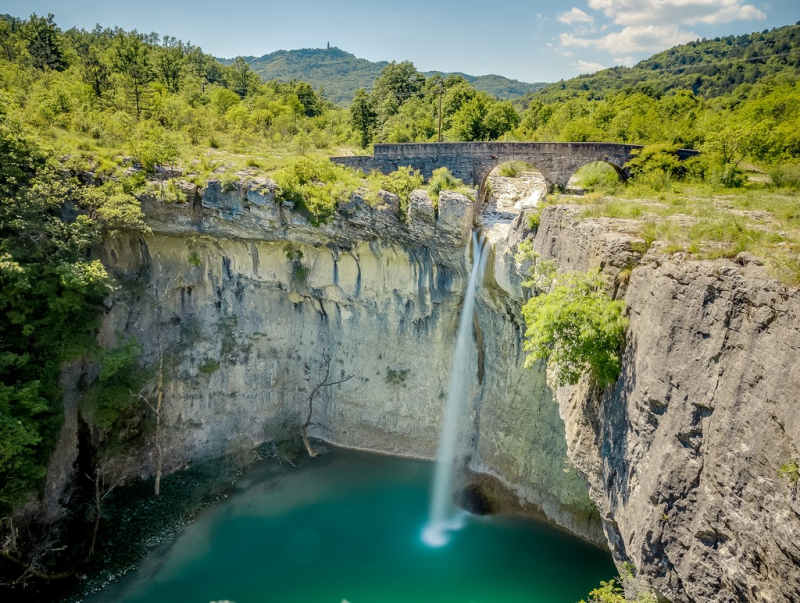
Photo: Tourist board 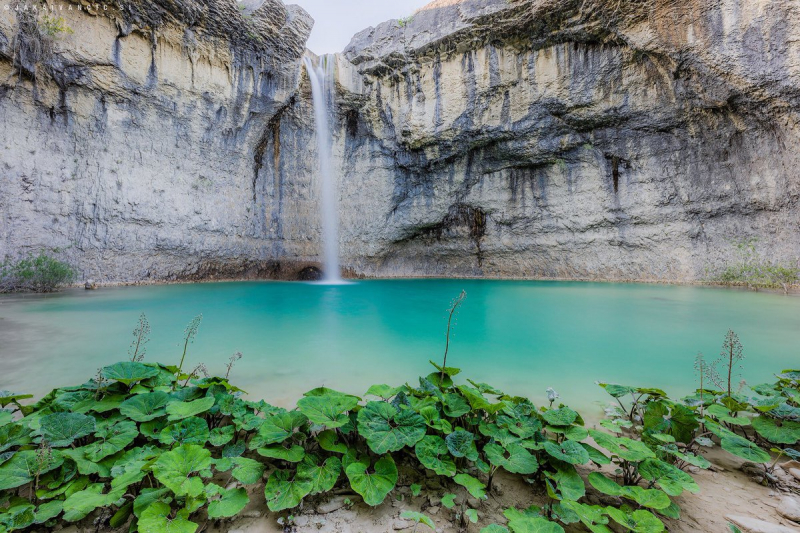
Photo: Twitter -
The first of seven travertine waterfalls along the Krka River is called BiluiaBilušića Buk. It is 100 meters wide and has two major and intermediate stairs that are 300 meters apart. The Krka River's whole breadth is condensed into a very small gap (6-7 m), and the cascade plunges powerfully from a height of almost 22 m. The force is so strong that occasionally the water will bounce off the river's surface and ascend once more. When you are there, you can check out a number of speleological sites in or close to the travertine barrier of the Bilušića buk waterfall, the most noteworthy of which is the Travertine Cave.
There are many obstructions downstream of the cascade, and immediately below them are travertine thresholds and islets. The exceptionally gorgeous and well-preserved fossil travertine is seen. Between the travertine steps, there is a tiny pond. The river widens and the flow slows after the lower stage. There are extensive willows and luxuriant sub-Mediterranean vegetation all around the waterfall. There are a number of tiny fields cultivated with vegetables beside the river. To stop Kninsko polje from flooding, rocks were blasted four times, altering the form of the Biluia Buk waterfall. Of the farm buildings that were formerly in use, only the mill has been kept as a historical marker of the area's conventional economic development. Today, this waterfall is neglected. Vegetables are grown in the nearby little fields that surround the waterfall.
Location: Krk
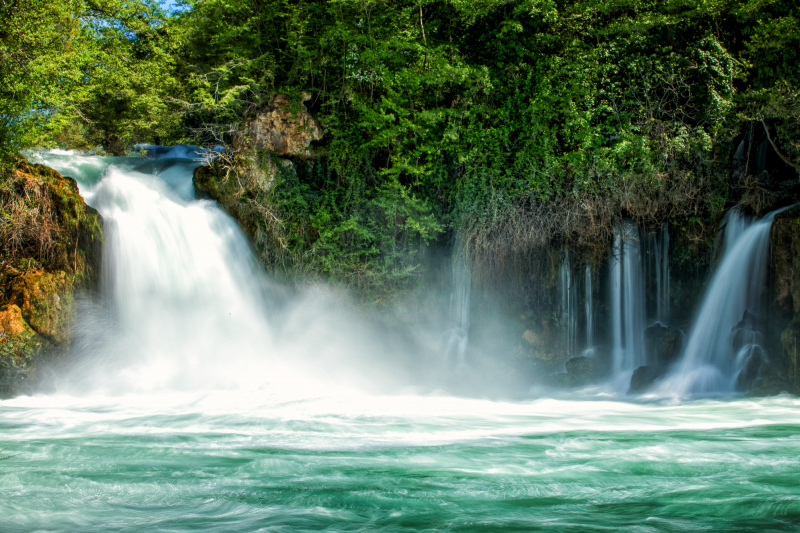
Photo: NP Krka 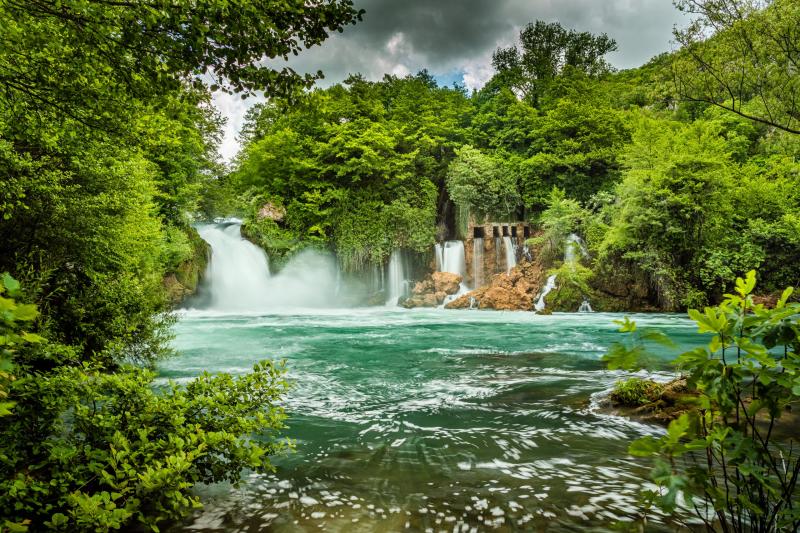
Photo: NP Krka -
The next one of the most beautiful waterfalls in Croatia is Gubavica Waterfall. The Cetina Canyon, which extends from Blato on the Cetina to Zadvarje, culminates in the Gubavica cascade. Thereafter, the Cetina flows more quietly across the valley toward the mouth. The waterfalls Velika Gubavica (48 m) and Mala Gubavica (7 m) are generated in the Zadvarje karst plateau's 200 m-deep canyon before crashing and making a loud noise as they descend into their lower bed. From the conveniently accessible vantage point, the waterfall may be viewed in the distance. This lovely location in the hinterland of Dalmatia is worth the short journey.
When it rains, the waterfall is extremely magnificent since the canyon is being filled with a lot of water. Then, from round apertures in the rock at its side, water pours into the valley. A loud boom and millions of small drops of water cover the entire canyon. Near the waterfall, you can frequently spot groups of adventurers wearing life jackets and helmets. Tour operators arrange excursions using climbing equipment to explore the canyon and the waterfalls. Instead of these two waterfalls, a sequence of six waterfalls are produced when it rains a lot and there is too much water in the accumulation lakes. Due to inaccessible terrain and erratic big discharges of water from reservoirs, access to the waterfalls is unfortunately exceedingly perilous because there is no well-maintained trail there. Additionally, Gubavica, like all waterfalls in the karst, is susceptible to drying out in the summer.
Location: Zadvarje
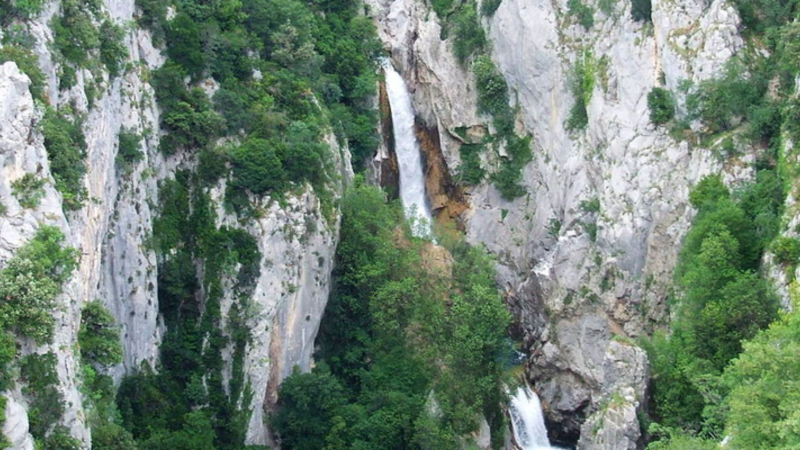
Photo: Embark.org 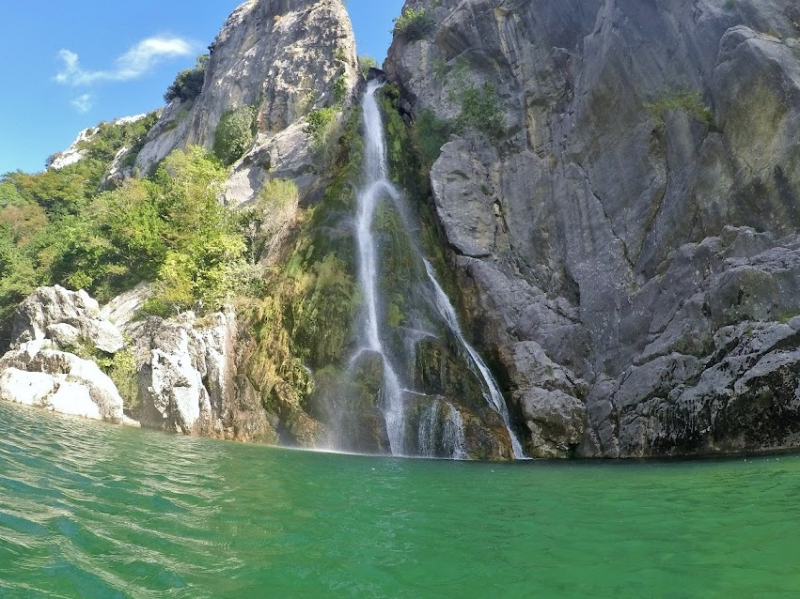
Photo: Google Sites -
There are multiple travertine waterfalls along the Krčić river's bed, with the Krčić waterfall being the biggest and most stunning. Underneath it, the Krka River rises. The waterfall has a height of 22 meters and a width of 30 meters during the rainy season. Veliki Buk and Turopoljski Buk are other names for it. It is situated close to Knin and receives its water supply from the Dinara mountain. In an endeavor to construct a hydroelectric power station, the Krčić waterfall was explosively destroyed and the travertine dam on the Krčić river was chambered, turning it into a seasonal waterfall.
Krčić slams against Krka with all its force as fall transitions into spring, and as winter sets in, it welcomes guests with snow and ice crystals. But in the summer, when it's hot and dry, the waterfall stops flowing, leaving behind white and green rocks that appear to have melted. The waterfall stops flowing during the summer, and the Krka's cave entrance then appears. The waterfall at Krčić has a legend. On the slope to the left of the waterfall, there formerly stood a fort that guarded the bridge. According to legend, the bridge will be reconstructed after conflict stops. The water will then flow continuously and the waterfall will stop drying up. Napoleon ordered a 15 km long macadam road along the Krčić River to be built 200 years ago to link Knin with Kijevo hamlet. You can reach the Cetina river's source by traveling deeper down Krčić Canyon on this old road.Location: Dalmatia
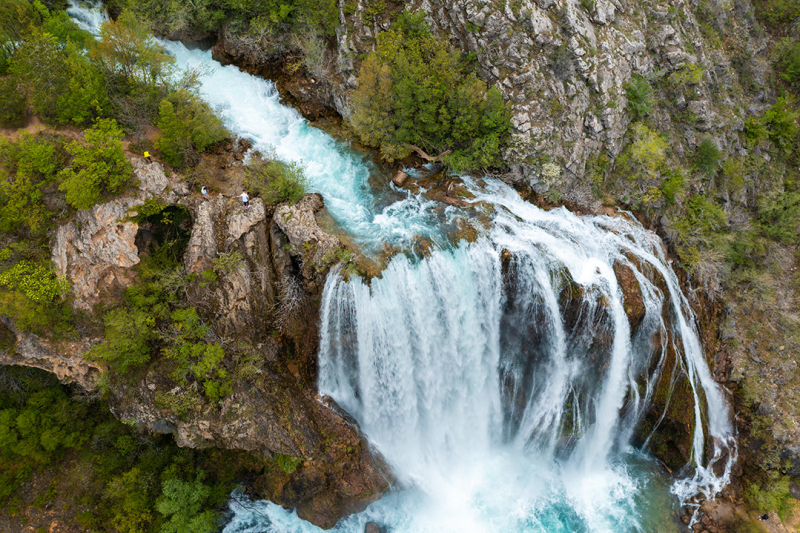
Photo: Explore Croatia 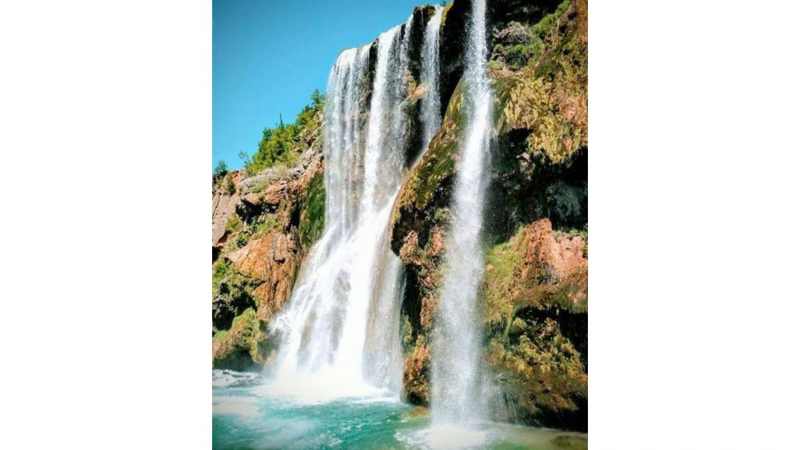
Photo: Pinterest

















